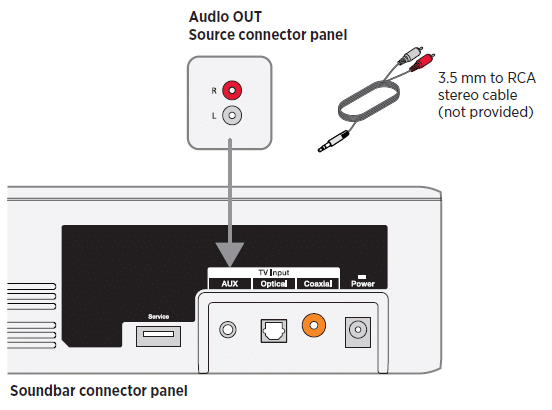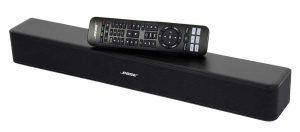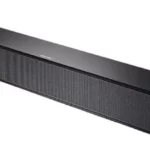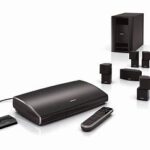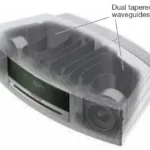Sections in this Manual
- Important Safety Instructions
- WARNINGS/CAUTIONS
- About your TV sound system
- Unpacking
- Placing the soundbar
- Sample soundbar placement
- Wall mounting the soundbar
- Cable options
- Connecting your TV
- Connecting the soundbar
- Connecting to power
- Mounting ring
- Turning off your TV speakers
- Powering on your soundbar
- Confirming your TV speakers are off
- Remote control buttons
- Programming the universal remote
- Customizing the power button
- Resyncing your cable/satellite box and TV
- Switching between sources
- Function buttons
- Pairing a Bluetooth® device
- If you cannot pair your device
- Connecting to a paired Bluetooth® device
- Switching between connected devices
- Clearing the soundbar’s Bluetooth® pairing list
- Soundbar indicators
- Status indicator
- Bluetooth indicator
- Connecting a source to the soundbar
- Connecting a source’s analog connector to the soundbar
- Connecting two sources to the soundbar
- Connecting a TV headphones connector to the soundbar
- Troubleshooting
- Adjusting the audio for wall mounting
- Replacing the remote batteries
- Cleaning
- Customer service
- Limited warranty
- Technical Information
Soundbar indicators
The status and Bluetooth® indicators on the front of the soundbar provide information on soundbar activity.

Status indicator
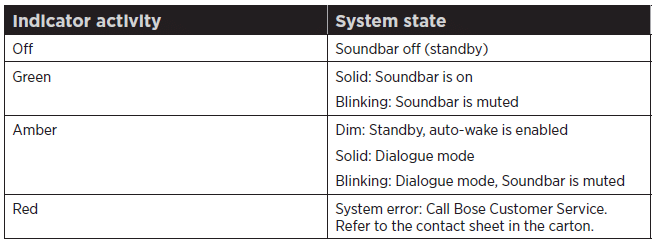
Bluetooth indicator

You may need to use an alternate setup method for the following reasons:
- No sound from a source(s) connected to your TV.
- No optical or coaxial connector on your TV.
No sound from a source(s) connected to your TV
Some TVs do not deliver sound from connected sources to the soundbar. Use an alternate setup method to directly connect your source(s) to the soundbar.

No optical or coaxial connector on your TV
Some TVs do not have optical or coaxial connectors. Use an alternate setup method to connect your TV to the soundbar.

Connecting a source to the soundbar
If you do not get sound from a source, such as a DVD/Blu-ray Disc™ player, cable/ satellite box, game system or DVR, connected to your TV, connect it to the soundbar. Use only one audio cable.
CAUTION: If using an optical cable, remove the protective caps from both ends. Inserting the plug in the wrong orientation can damage the plug and/or the connector.
- On the back of your source, locate the Audio OUT (digital) connector panel.
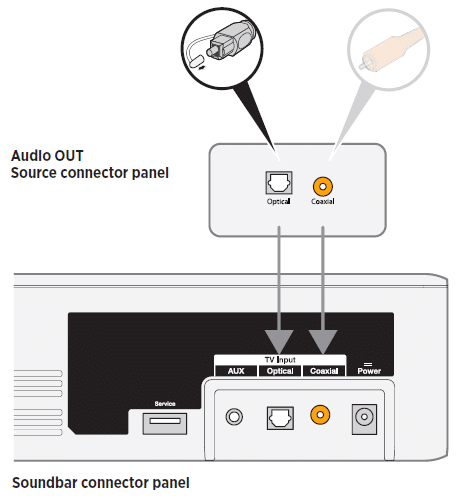
2. Choose an audio cable.
3. If you have not already, disconnect your TV from the soundbar.
4. Connect the audio cable from your cable/satellite box’s Audio OUT (digital) connector panel to the soundbar.
Note: Do not disconnect your source’s video cable, such as an HDMI™ cable, from your TV.
Connecting a source’s analog connector to the soundbar
If your source does not have an optical or coaxial connector, and only has analog
connectors (red and white), use a 3.5 mm to RCA stereo cable (not provided) to connect to the soundbar.
- If you have not already, disconnect your TV from the soundbar.
- Insert the RCA analog cable into the Audio OUT RCA (red and white) connectors on your source.
- Insert the stereo plug into the soundbar’s AUX connector.
